[/caption]
The LCROSS spacecraft will be giving it all up for science Friday morning when it and the second stage of the Centaur rocket impact Cabeus crater on the Moon’s south pole, searching for possible water ice hidden inside the perpetually dark portions of the crater. Since we’ll never see LCROSS again, its only fitting to take a good long, last look at her. Solar System Ambassador and Planetary Society volunteer Ken Kremer had the wonderful opportunity to see both LCROSS and her sister ship the Lunar Reconnaissance Orbiter (LRO) in the Astrotech Space Operations Facility clean room in Titusville, FL earlier this year before the dynamic duo launched together on June 18. Ken has graciously given permission to allow us to publish these images (which were previously posted on the Planetary Society website) so we can all remember what she looked like. Above is a side view of LCROSS wrapped in gold multi-layer thermal insulation. The solar array is on the left side. Science instrument, avionics, navigation, communication and thruster equipment panels encircle and are attached to the central payload adapter ring. The star tracker is on the right side, and the payload fairing halves sit at either side.
More images below.
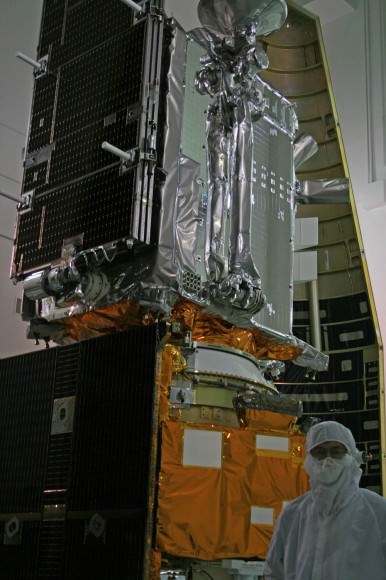
Here’s a picture of Ken with the two spacecraft. Visible are the solar arrays for LRO (top, left) and LCROSS (bottom, left). Visible is the LCROSS panel with the 9 science instruments (gold color) which run on just 100 watts of power. Above Ken’s head is the visible light camera.
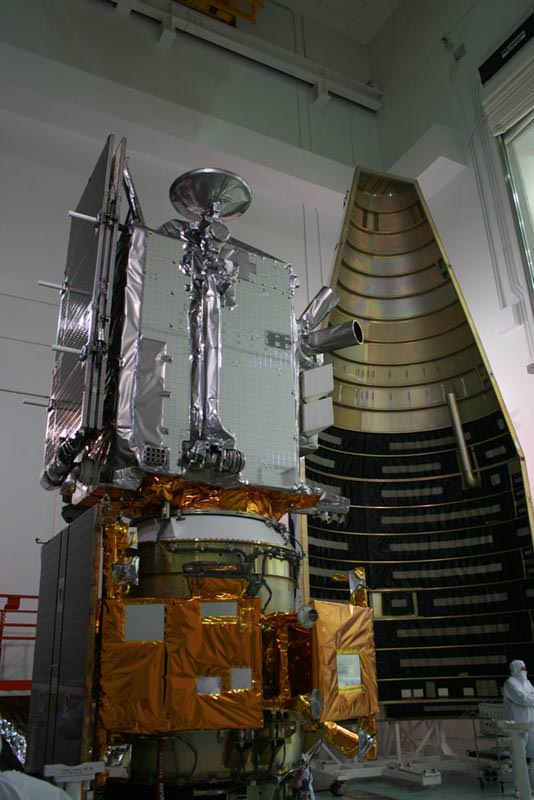
This image really provides a reference to how big these two spacecraft actually are. Note the person in the bunny (clean) suit standing next to LRO (gray) and LCROSS (yellow) lunar spacecraft stacked adjacent to Atlas V payload fairing.
And since we’ve now seen LCROSS up close, here’s a few new close-up images just released by NASA of Cabeus crater.
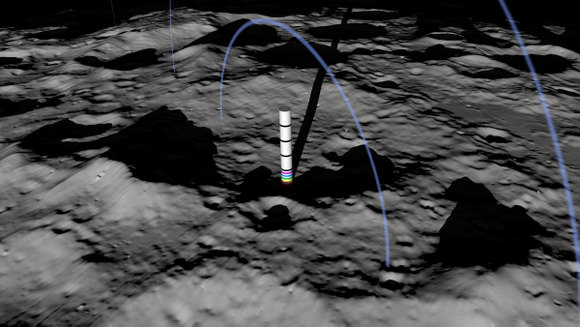
This visualization image gives a bird’s-eye view of Cabeus crater and the target zone for the crash site. A 3.5-kilometer-wide “flagpole” marks the targeted location within the crater. Colored stripes on the pole indicate one kilometer steps in elevation above the crater floor, black stripes indicate 5 kilometer steps. The pole stands 25 kilometers tall, and the blue rings mark heights of 50 and 100 kilometers above the impact site.
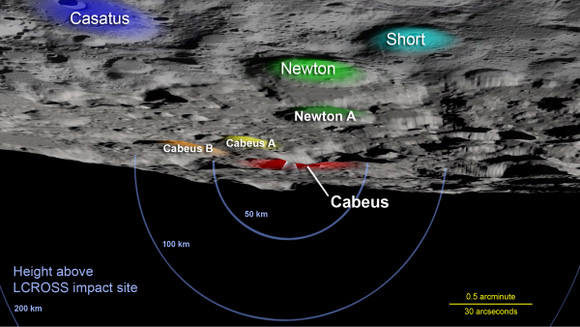
This image shows key lunar landmarks used to locate Cabeus crater. The yellow scale shows angular distances in the plane of the impact site; blue arcs show heights 50, 100 and 200 kilometers above it.
And click here for a link to a video visualization that zooms into Zoom into the Moon as it might look shortly after the LCROSS impact. Blue arcs represent 50, 100 and 200 kilometer heights above the crash site.
Hopefully the telescopes trained on this region of the Moon will give us the real images of this event!
Lead image caption: LCROSS Close Up. Side view of LCROSS wrapped in gold colored multi layer thermal insulation. Note solar array at left. Science instrument, avionics, navigation, communication and thruster equipment panels encircle and are attached to the central payload adapter ring. Star tracker at right. Payload fairing halves sit at either side.
Credit: Ken Kremer
Sources: Ken Kremer and the Planetary Society Blog, Goddard Space Flight Center

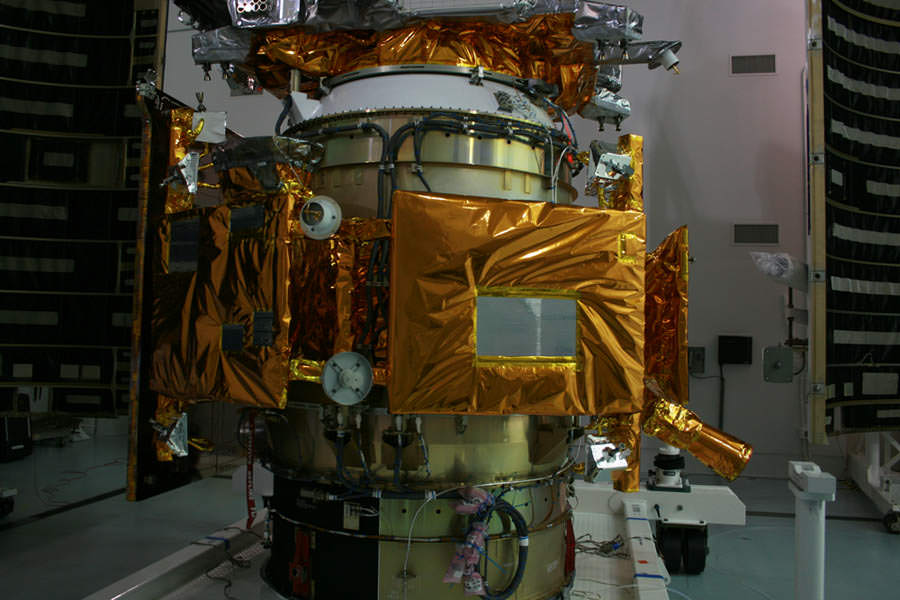
While the flash and debris cloud were not immediately obvious from the LCROSS probe, many ground and space-based datasets are still to be analyzed. The live approach video was reminiscent of the films made by the Ranger probes impacting the moon in the 60s! Waiting now for the preliminary briefing on the mission on NASA TV.
The Beeb has a very nice animation that I haven’t seen elsewhere yet.